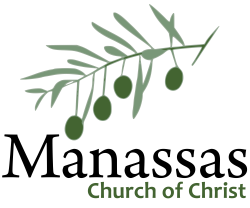 Meriwether Lewis, William Clark, and the Corps of Discovery they were leading West spent the winter of 1804 among the Mandan people north of what is now Bismarck, North Dakota. There they met a French fur trader named Toussaint Charbonneau. They thought he would be useful as a guide and translator, so he was hired to accompany them up the Missouri River, and on to the Pacific Ocean. Charbonneau had two wives at the time (over the course of his life he would purchase several wives from native peoples). They were both Shoshone women who had been taken by the Hidatsas, and one was very young, perhaps only 16. The older wife was named Otter Woman, and the younger was named Bird Woman. Charbonneau decided to take his younger wife, called Sacagawea in her native language, with him, although she was carrying a newborn son on her back. This decision was the one truly useful thing Charbonneau did for the Corps of Discovery.
Meriwether Lewis, William Clark, and the Corps of Discovery they were leading West spent the winter of 1804 among the Mandan people north of what is now Bismarck, North Dakota. There they met a French fur trader named Toussaint Charbonneau. They thought he would be useful as a guide and translator, so he was hired to accompany them up the Missouri River, and on to the Pacific Ocean. Charbonneau had two wives at the time (over the course of his life he would purchase several wives from native peoples). They were both Shoshone women who had been taken by the Hidatsas, and one was very young, perhaps only 16. The older wife was named Otter Woman, and the younger was named Bird Woman. Charbonneau decided to take his younger wife, called Sacagawea in her native language, with him, although she was carrying a newborn son on her back. This decision was the one truly useful thing Charbonneau did for the Corps of Discovery.
Lewis & Clark were duly appreciative of her value, mentioning it several times in their journals. They were particularly devoted to her son Baptiste, whom they called Pomp, and whom William Clark begged to adopt as his own. When Charbonneau and his family left the expedition, he was paid $500. Sacagawea received a medal with the likeness of President Jefferson on it, and some letters of commendation from Lewis, and from Clark. These she kept till her death in her mid-90s on April 9, 1884.
When Baptiste was a teenager, she left Charbonneau, who was increasingly abusive. She married a second husband, with whom she was happy, but who died young. Then, instead of going to live with her sons, or returning to the Shoshone people, she spent decades just roaming around the west. Because she spoke so many languages, because she was so spry (at 5’5’’ and about 100 lbs, she was tall and thin for her people) and because she was Sacagawea, she went wherever she wanted, and stayed as long as she liked.* She rode the stage coaches for free, and ate at the coach stations for free. Because she was useful as a translator she was never without coin. Because whites frequently gave her gifts she was never without items for trade. Until she was well into her 70’s she roamed the west from Missouri to Utah to Oregon to Montana, until being reunited with her son Baptiste, and stepson Brazile, at fort Washakie on the Wind River reservation in Wyoming. No one knows why she wandered so constantly, for so long.
Her life, from the time she met Lewis & Clark, until the time she reunited with her sons and settled down, was spent in travel – two very different kinds of travel. For more than a year she journeyed toward a destination, with a group of travelers who had a specific mission. For decades afterward she wandered – with no destination, no purpose, and for reasons known only to her. There is a distinction I want us to see between these kinds of travel – between the pilgrim and the wanderer. I want us to see this distinction because we disciples of Jesus are most definitely pilgrims.
The person of faith realizes that we “are strangers and pilgrims on the earth” (Hebrews 11.13). As Paul reminds the Philippians, we do not fasten our minds on things of the earth because “our citizenship is in heaven” (Philippians 3.19-20). Or as he said to our brethren in Corinth, here we dwell in tents, but “long to be clothed with our dwelling from heaven” (II Corinthians 5.1-5).
Neither the pilgrim, nor the wanderer feels tethered to an earthly place – but the pilgrim has a destination, and a path to it. We are a transient people, in a transient nation, at a transient time. Mentally, spiritually, ethically, morally, theologically we tend to wander as well. Destination provides direction. When we remember, daily, hourly where we are headed, and the singular path that will lead us there (Matthew 7.13-14), we will be focused, we will make progress.
We will be pilgrims, not wanderers.




